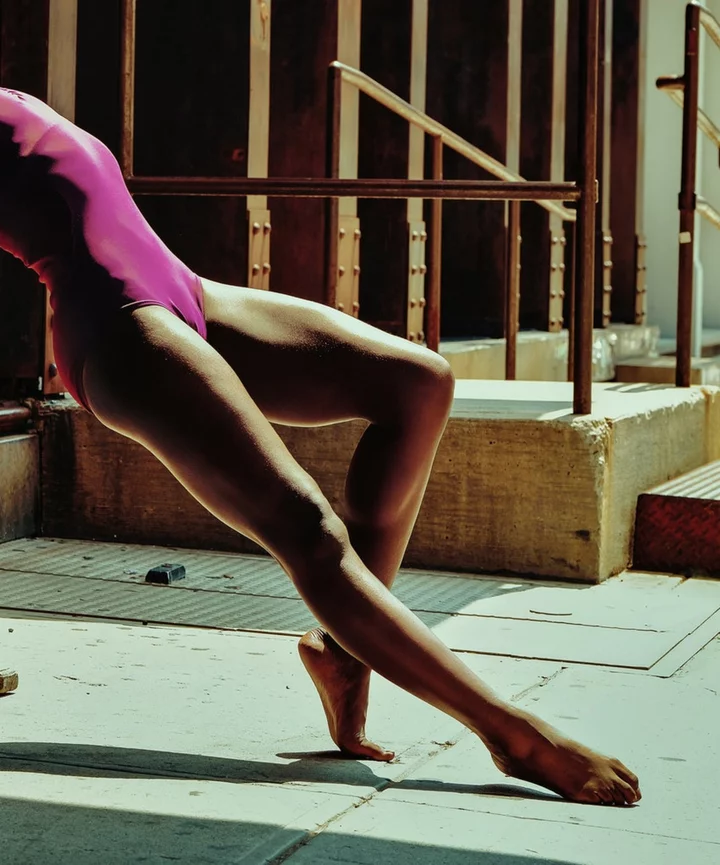In 1948, an all-white corps de ballet was the norm in a place like Theatro Municipal, then the most-esteemed performing arts theater in Rio de Janeiro. Getting accepted into its company was all Mercedes Baptista wanted. While she had taken classes in the theatro’s ballet school, Baptista knew her chances were slim — especially as a Black ballerina. The last Black dancer who tried to join the company in 1945 wasn’t even allowed to register for the audition.
But Baptista was able to try out, and after going through the scrutiny of a rigorous jury — composed of dance critics, journalists, directors, and teachers — she was in, becoming the first Black female ballerina at the Theatro Municipal of Rio de Janeiro. But Baptista, whose death is commemorated on August 18, made history that went far beyond the Italian Renaissance-like stage of Theatro Municipal.
Regarded by Dance Theater of Harlem as “one of the most known personalities in the world,” she was responsible for founding Afro-centered modern dance in Brazil. More than taking traditional Black Brazilian dance cultures to prestigious stages, Baptista helped break stigmas, raised the self-esteem of Black communities, and opened horizons for Black artists.
While doing classic ballet for a living seemed unrealistic for a Black working-class woman in the 1940s, Baptista resolutely chased the dream. Working as a cinema ticket agent at a young age, she watched films in her free time and became hypnotized by how Hollywood stars danced. She dreamed of becoming a famous dancer.
“More than taking traditional Black Brazilian dance cultures to prestigious stages, Baptista helped break stigmas, raised the self-esteem of Black communities, and opened horizons for Black artists.”
beatriz mirandaAfter taking ballet classes in public dance institutions for three years (1945-1948), entering Theatro Municipal’s dance company was a professional achievement that Baptista celebrated — dancing for a living was possible after all. But the dream job didn’t come as expected.
“I suddenly found myself excluded from everything,” Baptista said in a 1981 interview with a Brazilian news outlet. “Even if I put a doormat on my face, they would not let me step onto the stage — only once I walked across the stage wearing pointe shoes, and I was way at the back.”
With institutional racism so often casting Baptista aside, it didn’t take long for the dancer to connect with the Black movement that started consolidating in Brazil in the 1940s. She became particularly involved with Teatro Experimental do Negro. Founded by playwright Abdias Nascimento in 1944, the theater company repudiated caricatural and unidimensional representations of the Black experience in the performing arts.
“Her formation as a Black artist happens when she arrives at Teatro Experimental do Negro, which brings new Black aesthetics and identities to the scenic arts,” Erika Villeroy, a dance and dance history teacher who wrote a master thesis about Baptista’s work, tells Refinery29 Somos.
“They all felt restrained. At Theatro Municipal, Mercedes was never cast. Abdias was never able to present his plays in a ‘normal’ theater,” adds Lilian Santiago, co-director of Balé de Pé no Chão, an award-winning documentary about the Brazilian dancer. “They had the same yearnings, and gathered to change the course of history.”
In 1950, Baptista’s engagement with the Black movement earned her the opportunity to meet Katherine Dunham — an encounter that would change the Brazilian dancer’s life.
A Black anthropologist, dancer, and activist from the United States, Dunham came to Rio for the First Congress of the Black Brazilian. Impressed by Baptista’s dancing, Dunham offered her a residency in her academy in New York. The Dunham technique — combining Martha Graham’s modern dance, classic ballet, and a study of Black Caribbean dance cultures — inspired Baptista to create her own, but one focused on Brazil’s Black identities.
When she returned to Brazil, Baptista developed an extensive and ongoing field research of Black dance traditions across her country. Incorporating these studies into her classic and modern dance background (including the Dunham technique itself), she later systematized the Baptista technique, something unprecedented in 1950s Brazil.
“Baptista developed an extensive and ongoing field research of Black dance traditions across her country.”
BEATRIZ MIRANDAWhile other dance masters had already incorporated Afro-Brazilian dance traditions into European dances (like Eros Volúsia, Baptista’s first dance teacher), Villeroy explains that Baptista took a radically different approach when bringing these Black dances to the scene. In Brazil, in the 1940s and 1950s, “the white modernist discourse understood these dances as ‘primitive’ and ‘spontaneous.’ Baptista investigated the technical, aesthetical, choreographical, and poetic aspects of these dances, associating these repertoires with a method,” Villeroy says.
As Santiago puts it, Baptista “is the first to put the entire foot on the stage floor. And this is the first time it happened in a choreographed dance, on a performing stage.”
With this revolutionary technique, her work flourished. After founding her dance academy, which prioritized Black aspiring dancers, in 1952, she created the Ballet Folclórico Mercedes Baptista one year later. This was the first Black dance company to stand for Black protagonism and identity on prestigious stages, including Theatro Municipal — the same theater that snubbed Baptista years before and inspired her to find community.
From world-renowned singer Elza Soares to prestigious carnaval artist Joãozinho Trinta, many who learned from Baptista became transformed by her art. Charles Nelson, 70, is one of her last living pupils who is still an active dance teacher.
“She opened roads of professional self-sustainability through dance.”
Lilian SantiagoHe was 15 when he first saw her giving a dance class — the Afro-Indigenous dance module (then called “Primitive Dances”) at the Dance School of the Theatro Municipal.
“She had a low voice and was wearing a turban,” Nelson tells Somos, adding that she was a quiet person, but a joker. “The students were doing the Oxum (the candomblé deity of fertility) dance. I liked that. I asked if I could take classes with her, and she agreed. After many years I was like, ‘Wow, I was a Mercedes Baptista student.’ She really opened my mind.”
This month, he started teaching the Baptista technique at a renowned dance college in Rio.
Like Nelson, several students successfully transitioned into a dance career after studying with Baptista. For many of them, dancing for a living would be unattainable without Baptista, who inaugurated a job market that didn’t previously exist for the Black working class.
“She opened roads of professional self-sustainability through dance,” Santiago affirms, recalling the testimonials of some of Baptista’s former students, who claimed they would have, otherwise, probably become housemaids.
“Baptista’s work, on its hand, affirmed the Brazilian identity as Black. This was completely subversive.”
Erika VilleroyIn the biography Mercedes Baptista – A Criação da Identidade Negra na Dança, author Paulo Melgaço affirms: “Long before people spoke of social projects, she had already developed this kind of work, creating opportunities for Black people to discover themselves as artists and, above all, rescuing their self-esteem through dance that went beyond the European model.”
What’s more, she helped found the Labor Union of Dance Professionals in Rio centered the professionalization of Afro-Brazilian dance workers.
A lifetime dedicated to dance earned Baptista official recognition. Since 2021, Rio de Janeiro officially celebrates the Day of the Afro-Brazilian Dance on the anniversary of her death, August 18.
While little known to a wider audience, Baptista’s legacy, Villeroy says, is, above all, political: “In the 1950s, the official discourse celebrated the Brazilian miscegenated identity — but understood ‘miscegenation’ as a whitened, de-Africanized identity. Baptista’s work, on its hand, affirmed the Brazilian identity as Black. This was completely subversive.”









